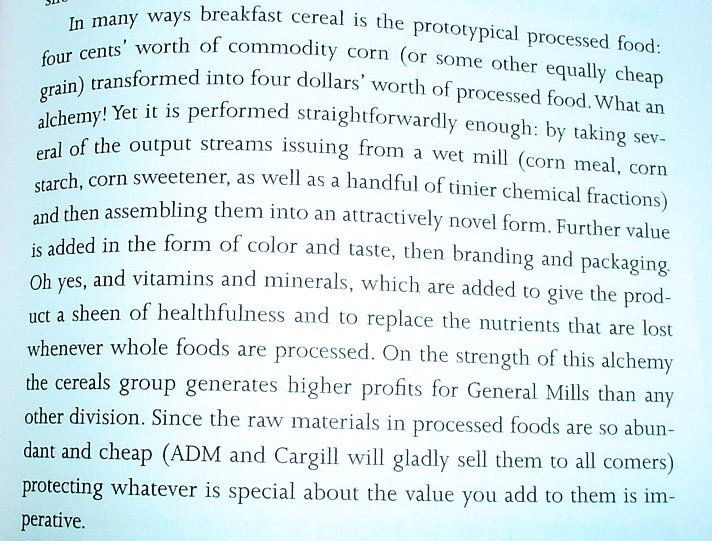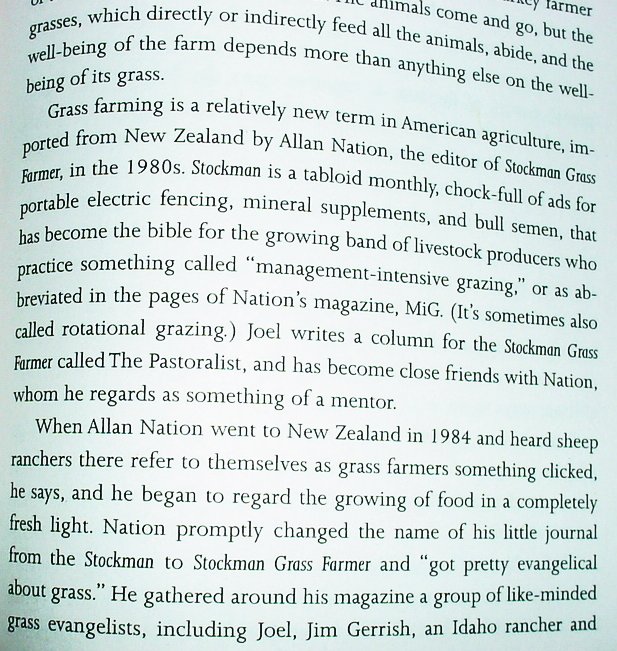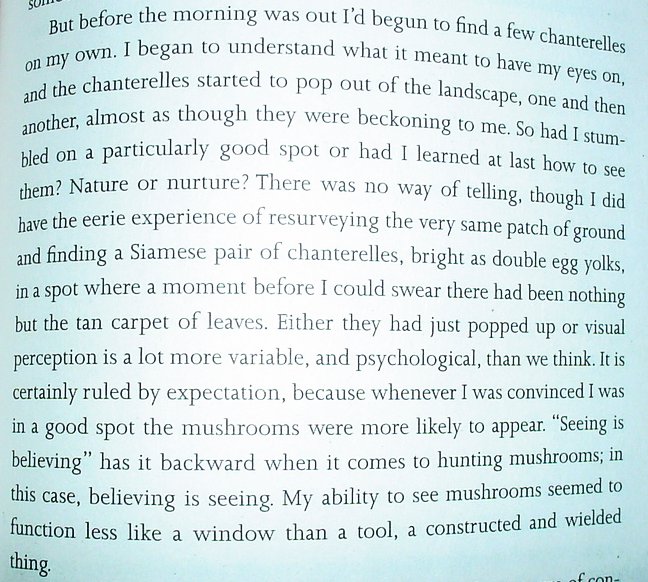The
omnivore's dilemma is a question older than civilized man. It boils
down to "what do I eat for my next meal?" Michael Pollan looks at three
different meals in enough detail to see how they were created by our
culture, and what the footprint they leave in our ecosystem is. Reading
the book I also learned a lot about crop subsidies, the ethics of
vegetarianism, and what chickens would rather eat and how.
The
first meal is fast food. Burgers, soda, and fries consumed at 65 MPH in
a car on a California freeway. It turns out that the keystone species
is corn. In one chapter an Iowa farmer calls corn "the ultimate welfare
queen", because of all the subsidies the federal government showers on
growers. In another he looks over a processing plant that cracks corn
into "high fructose corn syrup" and a number of other things key to the
industrial food chain. Steer 534 and many others are fattened for
slaughter on a diet rich in corn before being sold to processing plants
that grind them for burgers. The potatoes are deep fried in corn oil.
The whole meal costs fifteen dollars or so for the authors family, not
counting all the subsidies.

The
second meal is chicken, corn on the cob, salad, and chocolate
soufflé at an old friends house in Charlotte, Virginia. Most of
the ingredients came from an old fashioned farm a few hours drive from
there, where Pollan invested a week learning about the grass fed food
chain. The important part of this meal is played by the chickens and
the pastures they were raised on. It turns out that using cows to cut
the grass of a pasture and then sending in chickens to eat the insect
larvae growing in the cow pies and whatever else they can forage there
is a good way to get human food value out of land. Cows and chickens
eating grass don't need fossil fuels. Chickens keep the bug density low
by eating their larvae. Chicken droppings add a lot of nitrogen to the
soil, enriching it for the next go round. Pollan explains that this
meal has a much smaller ecological footprint than the fast food meal,
and was much tastier and satisfying in many ways.

The
third meal was wild pig, wild mushrooms, and an assortment of other
foraged items including cherries and salad. The idea was to eat only
things he could forage for or grow. After a thirty page essay about the
ethics of eating animals, Pollan goes out and shoots a pig that weighs
as much as he does. Then he learns how to find mushrooms where a forest
fire has been. Most of the rest of the ingredients he forages for
around Berkeley, where he lives. Trees are the stars of this meal.
Acorns are big in the wild pigs diet. Cherries make the desert. The
mushrooms are symbiotic with the pine trees, and only fruit after a
forest fire has stopped the drip of sap they depend on. Pollan enjoyed
this meal the most of the three. Because he had to go so far out of his
way to collect the ingredients he doubts that it was anywhere near as
sustainable as the grass fed meal.

What
makes the book fascinating is the many anecdotes that explain the
forces on the people in the various food industries. The Virginia
farmer serves up a dose of "non barcode people" politics with every
sale. The Iowa farmer uses lots of fossil fuels to plant, fertilize,
harvest, and move his corn. Sonoma County, California has wild pigs
because the conquistadors released their ancestors to forage for food
so they could be hunted later. This was the first book I really enjoyed
reading in many months.



